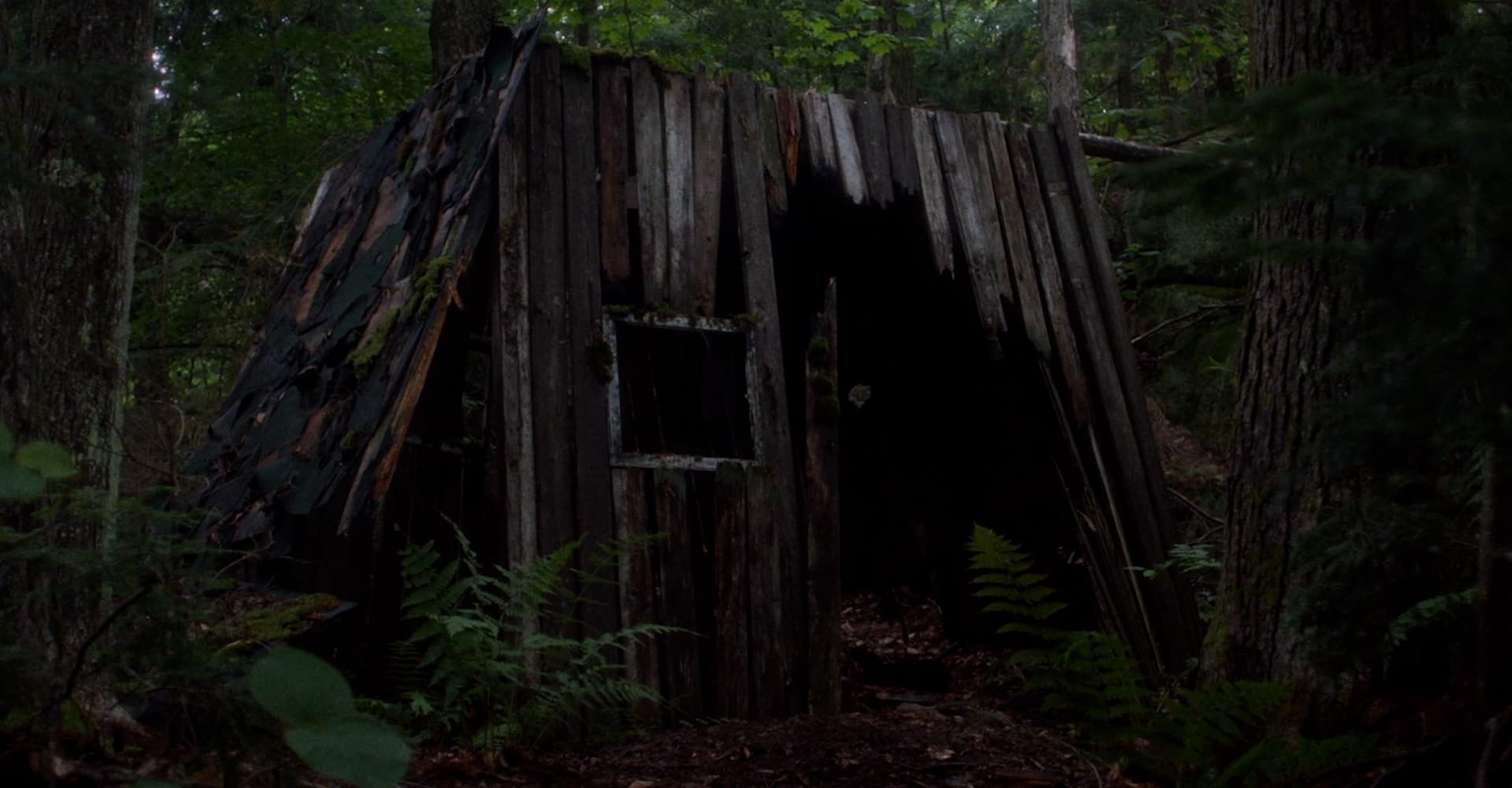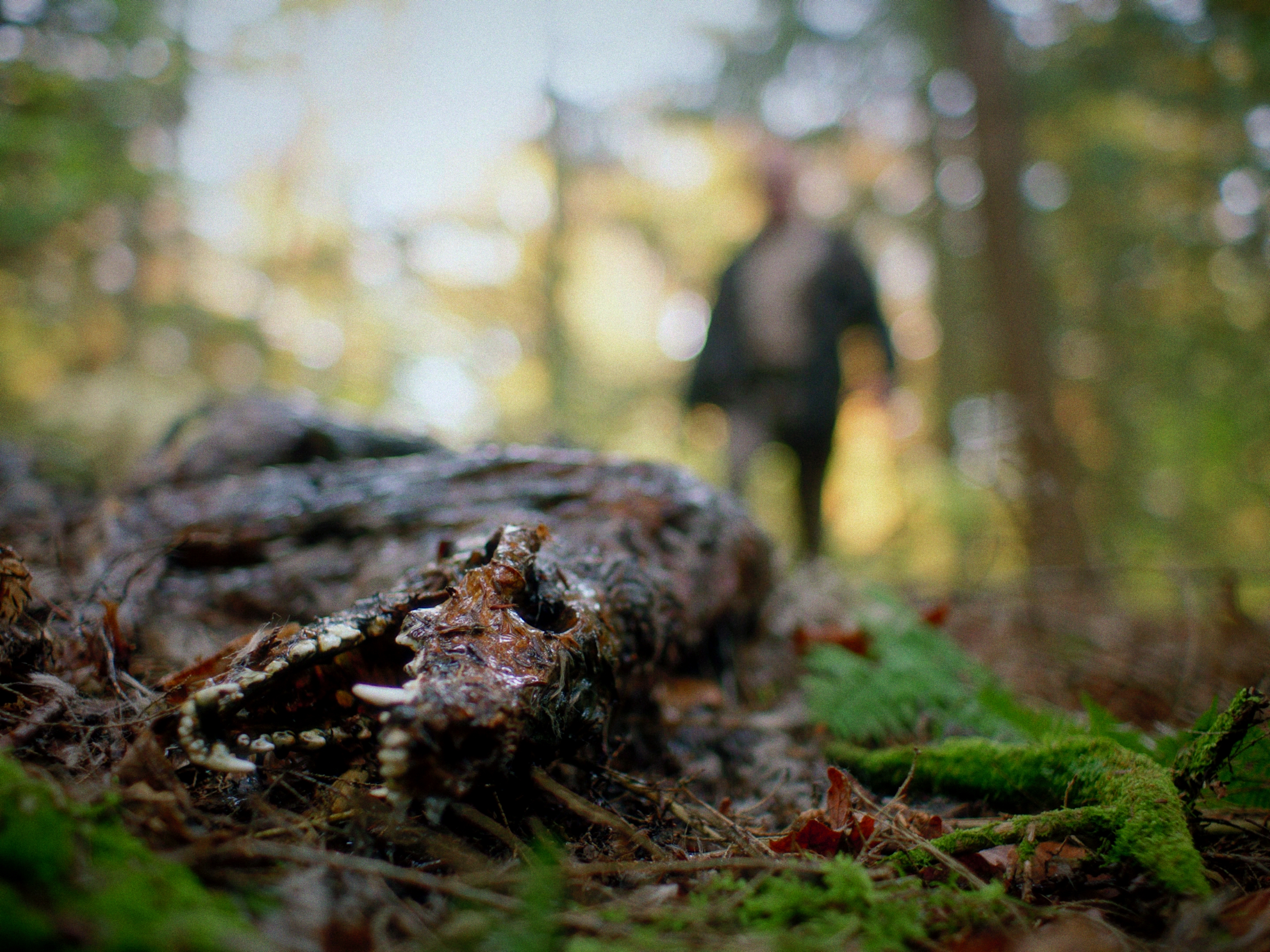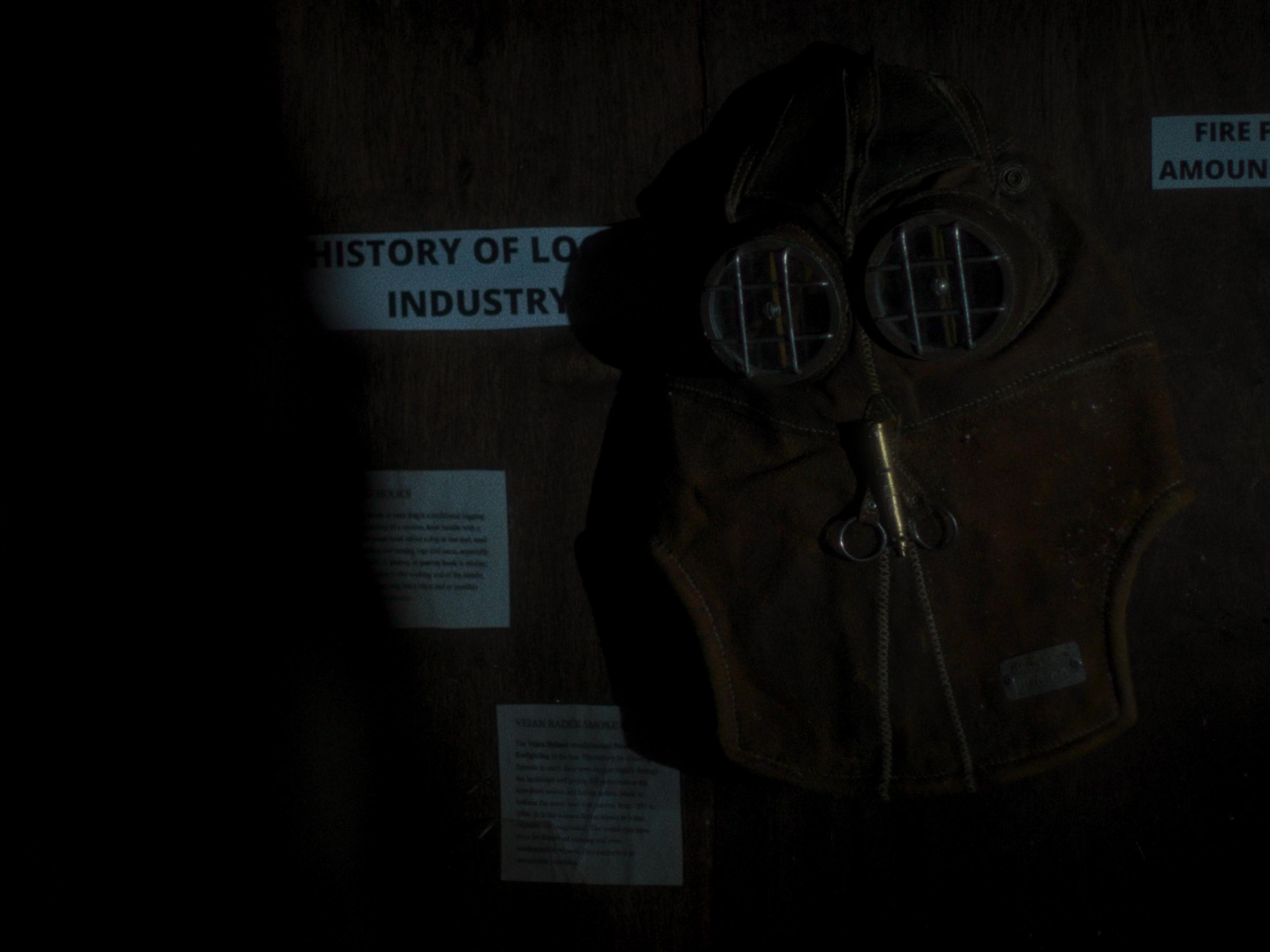In a Violent Nature (2024)
Directed & Written by Chris Nash
Starring Ry Barrett, Andrea Pavlovic, Cameron Love, Reece Presley, Liam Leone, Charlotte Creaghan, Lea Rose Sebastianis, Sam Roulston, Alexander Oliver, Timothy Paul McCarthy, & Lauren-Marie Taylor.
Horror
★★★★1/2 (out of ★★★★★)
DISCLAIMER:
The following essay contains
SIGNIFICANT SPOILERS!
This is your only warning.
 Chris Nash’s In a Violent Nature is a slow-burning slasher that tells the folktale-cum-true-crime-story of Johnny (Ry Barrett), who met an untimely death as a boy due to the actions of loggers and is now resurrected to go on a vicious killing spree throughout the wilds of Ontario. Nobody’s safe from Johnny and his violence. But there may be a way for someone to put an end to him carving his way through the forest, if only they can figure out what exactly is driving him to commit unspeakably gruesome horrors against one victim, after another, after another, after another.
Chris Nash’s In a Violent Nature is a slow-burning slasher that tells the folktale-cum-true-crime-story of Johnny (Ry Barrett), who met an untimely death as a boy due to the actions of loggers and is now resurrected to go on a vicious killing spree throughout the wilds of Ontario. Nobody’s safe from Johnny and his violence. But there may be a way for someone to put an end to him carving his way through the forest, if only they can figure out what exactly is driving him to commit unspeakably gruesome horrors against one victim, after another, after another, after another.
Nash’s film has repeatedly been described by various critics as a slasher film by way of Terrence Malick, which is not entirely a bad description; however, most will take this at face value, believing it means the film contains a lot of pretty, carefully-constructed nature cinematography, and while they’re also not wrong, the comparison is far deeper than surface level. In a Violent Nature mixes the brutality and gore of the slasher sub-genre with the existential philosophising via nature typical of Malick’s work. In my reading of Nash’s film, the silent killer Johnny and his rampage are an allegory about the horrors we’ve wrought through our disrespect of the natural world; we reap what we sow eventually when it comes to Mother Nature.
“Maybe it‘s here for a reason.”
 One of the best symbols throughout In a Violent Nature is that of the locket taken from the fire tower’s ruins and—as we’re reading Johnny to be a figure rising up to take revenge for the forest and nature as a whole—it becomes a further symbol of Mother Nature. Johnny takes revenge in his mother’s name after her locket’s stolen. While there are folk tales about Johnny’s violence in that forest, Johnny doesn’t appear to be taking revenge for himself specifically, but, rather, Johnny’s resurrection and subsequent revenge is precipitated by the necklace’s removal, which situates his mom as the larger figure of Mother Nature.
One of the best symbols throughout In a Violent Nature is that of the locket taken from the fire tower’s ruins and—as we’re reading Johnny to be a figure rising up to take revenge for the forest and nature as a whole—it becomes a further symbol of Mother Nature. Johnny takes revenge in his mother’s name after her locket’s stolen. While there are folk tales about Johnny’s violence in that forest, Johnny doesn’t appear to be taking revenge for himself specifically, but, rather, Johnny’s resurrection and subsequent revenge is precipitated by the necklace’s removal, which situates his mom as the larger figure of Mother Nature.
Late in the film, we also hear about “henhouse syndrome” (a.k.a surplus killing) when the Final Girl encounters a woman in a pickup truck, and this serves as another link between Johnny and the natural world. Surplus killing is when a predator kills more prey than they’re able to consume right away so they either hide the rest or abandon it; this is common behaviour among all kinds of predatory animals, from bears and big cats (lynxes, jaguars, lions, leopards) to wolves, foxes, and even dogs. While there’s no definitive, universal cause for surplus killing that biologists have identified, it’s natural to so many predators. The woman in the truck says: “They just keep killing, for no reason . . . Animals don‘t get too hung up on reason.” Though Johnny’s paralleled with an animal here, the woman’s comment about animals and reason is juxtaposed by a shot revealing that Johnny’s retrieved his mother’s stolen locket and his retaliatory violence has come to an end, suggesting that this animal—like many animals—is, indeed, driven by reason; or, more specifically, driven by cause and effect, like so much of the natural world. Just because we don’t understand nature’s reasons doesn’t mean there aren’t any.
Like the slow shuffle of George Romero’s Living Dead zombies, or the hauntingly quick walking pace of John Carpenter and Debra Hill’s Michael Myers, the slow, methodical shots where Nash has us follow along in the POV of his slasher Johnny can be taken to symbolise the inevitability of death; not to mention time in the context of nature which, more often than not, leads to death. There are a whole bunch of these shots, though one of the most effective is when Johnny approaches two flirting lesbians, and Nash ratchets up the suspense as Johnny walks into the lake, submerging below the water, only to, eventually, pull one of the women below the surface to kill her. The drawn-out pacing of this scene, like the other various moments where Johnny’s painstakingly stalking potential victims, reaffirms the natural idea that death comes for everybody: it’s simply matters of time and circumstance that makes it different from one person to the next, like the varied kills of a slasher film. There’s a very interesting use of “The Blackfly Song” (originally written by Wade Hemsworth; the version used in the film is by Tracy Newman) as the credits begin to roll. The song is cutesy, and a perfectly jarring tune to finish off the wild, bloody experience that is In a Violent Nature, yet its folksy romp belies the story behind the song: Hemsworth wrote the song in 1949 about his experiences in the Ontario wilderness while with a Hydro-Electric Power Commission of Ontario crew surveying the Little Abitibi River to see if they were able to construct a dam, the Abitibi Canyon Generating Station. Hemsworth was part of a crew that was encroaching upon nature for the purposes of further industrialising the natural world. The Abitibi Canyon Generation Station’s construction necessitated a colony being established to house its employees and their families. Long story short: “The Blackfly Song” plays into the overall reading of In a Violent Nature depicting nature taking revenge against human interference with the land. In this light, the black flies eating Wade and “a–pickin‘ [his] bones” can be read symbolically in the same way as Johnny: pieces of nature fighting back against those who seek to harm it.
There’s a very interesting use of “The Blackfly Song” (originally written by Wade Hemsworth; the version used in the film is by Tracy Newman) as the credits begin to roll. The song is cutesy, and a perfectly jarring tune to finish off the wild, bloody experience that is In a Violent Nature, yet its folksy romp belies the story behind the song: Hemsworth wrote the song in 1949 about his experiences in the Ontario wilderness while with a Hydro-Electric Power Commission of Ontario crew surveying the Little Abitibi River to see if they were able to construct a dam, the Abitibi Canyon Generating Station. Hemsworth was part of a crew that was encroaching upon nature for the purposes of further industrialising the natural world. The Abitibi Canyon Generation Station’s construction necessitated a colony being established to house its employees and their families. Long story short: “The Blackfly Song” plays into the overall reading of In a Violent Nature depicting nature taking revenge against human interference with the land. In this light, the black flies eating Wade and “a–pickin‘ [his] bones” can be read symbolically in the same way as Johnny: pieces of nature fighting back against those who seek to harm it.
In the end of the film, nature’s respected when the locket’s given back, and Johnny, along with his terrible violence, recedes back into the earth from which he sprang. As such, In a Violent Nature portrays a message that we need to stop taking from nature and start giving back. Of course, following the allegory in my reading, it’s tough to give back to Mother Nature what we’ve taken, like mother’s locket is given back to Johnny; a lot of what we’ve taken from the natural world comes in the form of finite, non-renewable resources. The least we can do is stop actively harming the natural world, which is what the Final Girl of In a Violent Nature does by leaving the locket for Johnny to find.
The more we continue to harm nature on a global level, the more nature fights back in revenge against us with increasingly horrific storms, floods, earthquakes and more. Sure, Nash’s film can just be a slice(-and-dice) of slasher film goodness that does something different from the standard sub-genre fare. In a Violent Nature also serves as a powerful allegory about our mistreatment of nature and the life that it bears, and as a reminder that as much as nature nurtures and grows, it can also do terrible, unspeakable things in order to protect itself.


Pingback: Reviews: In a Violent Nature (2024) – Online Film Critics Society